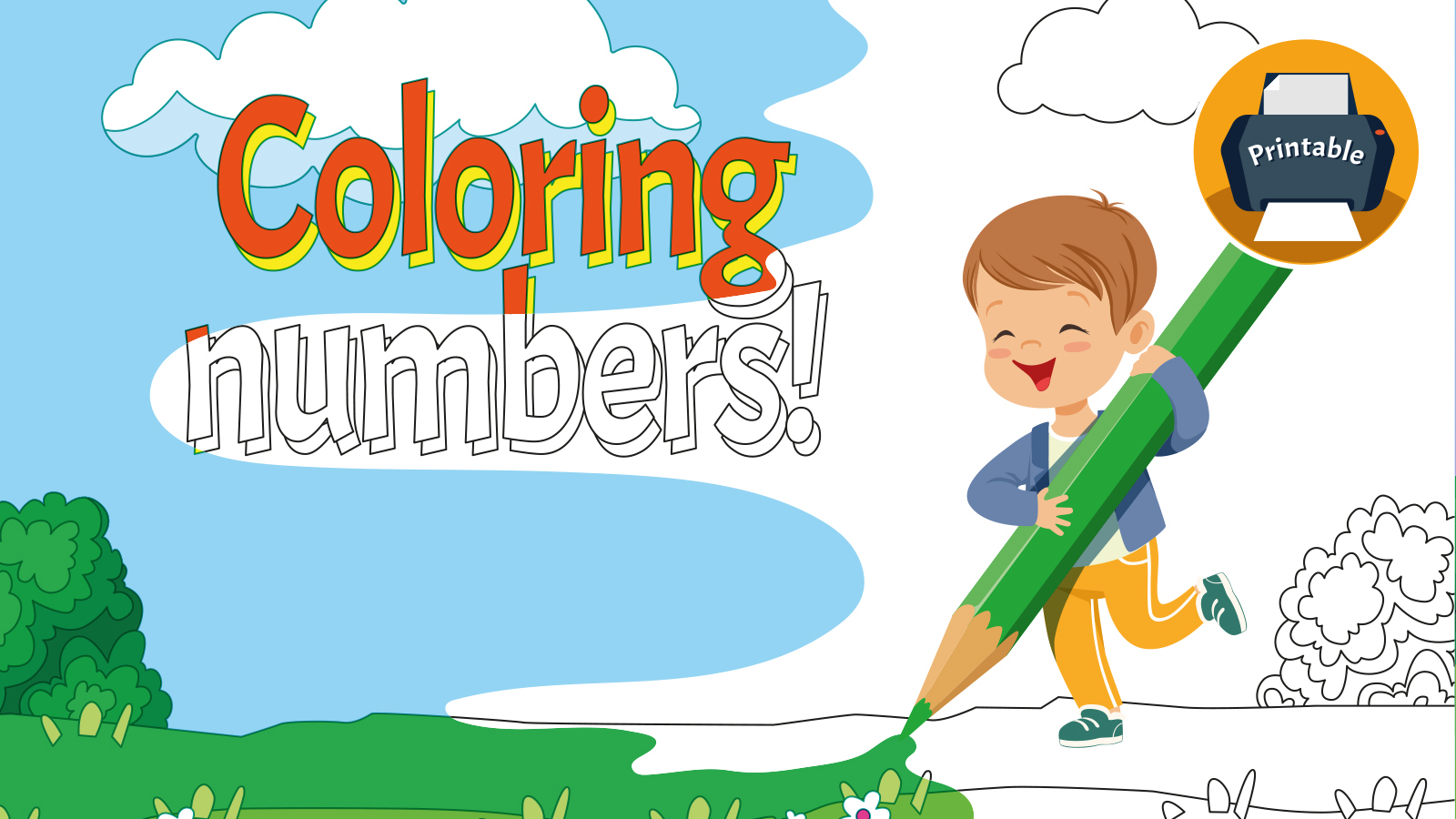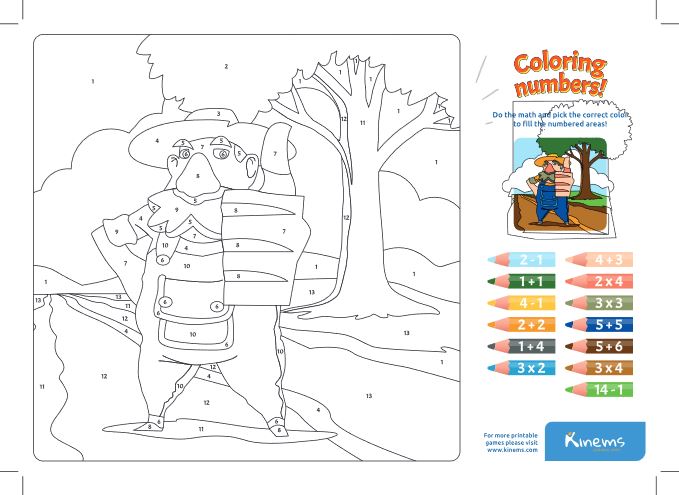Printable Educational Board Game | Coloring Numbers

Coloring is one of every child’s favorite activities!
During their learning schedule at school, coloring activities can be their “creative” and relaxing break!
Coloring has also many educational benefits:
1. Practice eye-hand coordination skills
2. Improves concentration
3. Practice color recognition
4. Reinforces a sense of achievement
The “Coloring Numbers” game combines all these benefits with practice in basic math concepts!
In this game, students need to solve a simple math operation in order to find the right color required for each area of the page.
Once they have the numeric answer for the operation on a colored pencil, they find the place in the picture with that number and color in the area with that color.
This game offers practice in solving equations and operations and it also provides fine motor practice in coloring between the lines. You can also enhance vocabulary by naming the objects, labeling the objects, discussing the colors and the hues. For example, there are several different hues of purple: lavender, deep purple, amethyst.
How to play
Game 1
Solve each operation and write the numeric answer next to the colored pencil. Find the corresponding answer in the picture and color in all of the spaces with that answer. For example, the light brown colored pencil on the Farmer page 2 is the problem is 3 x 4. Once this is solved, then everywhere there is a 12 in the picture, the child should color in this light brown color.
Game 2
For each color that has a numeric solution, come up with other equations to come up with the same solution. So for 12, there is 2x6, 6x2, 3x4, 4x3, 10 + 2, 14-2…etc. See who can come up with the most equations!
Game 3
After coloring in the picture, cut out shapes and make a puzzle out of it. Make it easy or hard to do by cutting small pieces or the whole shape. For example, cut the entire fairy and the bell & leaves and each of the mushrooms. Put it back together as a challenge.
Game 4
Cut out each of the pencils and glue them on a blank page. Solve the equation. Have them list all of the equations that also create that number. Cover up the pencil and ask family members to guess that number. Put the page on the refrigerator.
Game 5
Cut out each of the colored pencils group. Glue it on a blank piece of paper. Each family member gets one color palette. Their job is to find something in the house that is the same color as each of the colors and write down the name of the object next to the pencil it matches.
Learning Goals
First and Second Grade
Add and subtract within 20, demonstrating fluency for addition and subtraction within 10. Use strategies such as counting on; making ten (e.g., 8 + 6 = 8 + 2 + 4 = 10 + 4 = 14); decomposing a number leading to a ten (e.g., 13 – 4 = 13 – 3 – 1 = 10 – 1 = 9); using the relationship between addition and subtraction (e.g., knowing that 8 + 4 = 12, one knows 12 – 8 = 4); and creating equivalent but easier or known sums (e.g., adding 6 + 7 by creating the known equivalent 6 + 6 + 1 = 12 + 1 = 13).
Third Grade
Fluently multiply and divide within 100, using strategies such as the relationship between multiplication and division (e.g., knowing that 8 × 5 = 40, one knows 40 ÷ 5 = 8) or properties of operations. By the end of Grade 3, know from memory all products of two one-digit numbers.
Additional fun activities
Pick one of the colored pencils from the collection and cut it out. Paste it on a blank piece of paper. Find old magazines or junk mail flyers to identify objects that are that same color. Cut them out and paste them on the paper.
Pick a number from the solutions. Find objects that are that number. For example, pick the number 12 and find what things are a dozen. Eggs for example.
Grab some flyers from supermarkets or the junk mail. Get scissors and glue. Tell them to find a number with a 7 in the “ ones” place and cut it out. Then a number with a 1 in the tens place. Cut it out. Have them challenge you to find the number they say and cut it out. Glue them on the page. Then factor each of the numbers. How many equations can make that number?
Use playing cards as an equation game. Each person gets five cards. Picture cards can be either a 1 or a 10. The first person puts down a number card on their turn. The next player can make an equation that equals that number. It can be any operation. If they equal that number, they keep that card in a separate pile. If they can’t they take another card. The object of the game is to get rid of all your cards.
Kinems offers a wide range of educational resources and effective lesson plans, as part of its "Whole Child Approach".
This is a holistic educational approach that cultivates the spiritual, emotional, physical, and psychological dimensions of a developing child. It goes beyond their academic and future professional success, to prepare children to meet the overall challenges they will face later in life.
Learn more about Kinems "Whole Child Approach" by booking a free demo with one of our educational experts:

